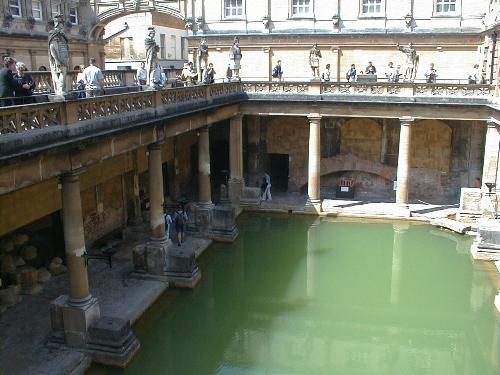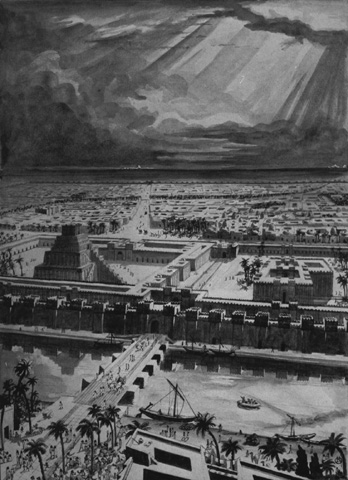No Growth Economics
July 9, 2007
Our topic for today is the idea of “no growth economics.” We’re trying to expand the concept of economics to a more flexible format, that can be applied to various situations and goals.
I often use the term “economic health” instead of “growth,” as it gets closer to what I mean. For probably the last hundred years, there have been criticisms that “growth” has not really led to any apparent improvement in livelihoods. This is becoming more pertinent as resource depletion, particularly on the energy side, is looming as an unavoidable barrier to furthering the ideas of “growth” that have become common over the past century. By “economic health” I mean largely that people enjoy prosperity and abundance. When economists talk about “growth” they are often talking about avoiding unemployment. Historically, when there isn’t “growth” then there’s unemployment, and most everyone would choose “growth” right? I defined economics previously as the study of how people make a living, which gives us a wider scope of inquiry than nattering on about GDP or interest rates. Let’s take the pre-Columbian Native North Americans, for example. While it is important not to idealize this group too much (the Aztecs sure seem like a bunch of nutjobs), nevertheless it is also important not to fall into careless relativism, assuming that they were equally as enervated, enslaved, and warlike as Europeans of that time or people today, just because they were humans. I would say that, for the most part, it appears that the simple lifestyles of the Native Americans provided prosperity and abundance, on their terms. They enjoyed “economic health,” in a format without apparent growth. At least they didn’t need Prozac to get through the day. They didn’t pay taxes or work 9-to-5 either. And they were never unemployed.
As a line of thinking, what if we changed the ideals of “success” from acquiring more stuff — it seems that everyone buys into this, from the poorest to the richest — to fostering prosperity and abundance? Aren’t they the same? Or are they actually polar opposites? Probably everybody understands the futility of endless consumption on a personal basis, but on an aggregate basis as well this is pretty close to what economists call “growth.” In my experience, not even people with rather high incomes, in excess of $250,000/year, really enjoy prosperity and abundance. They have more money, but they spend it all, and, after taxes, $250,000 doesn’t buy as much as you might think. This produces anxiety, as they must then continue to make $250,000 or their whole project comes crashing down. They can’t pay the mortgage, they pull their kids out of private school, the Porsche gets repo-ed, and so forth. And then the divorce. It would appear that, even if all Americans were able to enjoy incomes of $250,000 a year, they would be just as overworked, enervated and anxiety-ridden as they are now, prosperity and abundance just as out of reach, with walk-in closets and three-car garages and a week off in Tahiti. One of the reasons why we perceive the Native Americans as having enjoyed prosperity and abundance is that, despite their rather low capability of creating stuff (productivity), they were able to satisfy their basic requirements of living with almost no effort. If they wanted a house, they would simply make one out of naturally available materials. This might take about a week of labor, less with help. No mortgage, no taxes. When they wanted to go somewhere, they walked. When they were hungry, they produced food in some manner, and they didn’t have to go to a job interview for the right to do so. When the chief of the village was getting on their nerves, they said “see ya bucko” and walked over to the next valley. And when they didn’t feel like doing anything, they did nothing. The example of the Native Americans produced quite an impression on the incoming Europeans, who had lived for centuries under one tyranny or another. The American project as conceived by the Founding Fathers, with its Constitution, no taxes, no standing army and so forth, was heavily influenced by the Native American example.
We don’t have to live in teepees. Yet, if prosperity and abundance comes from making the hurdles to livelihood very low, how might that come about today? In the poorer parts of the US, many people live in “manufactured housing.” A “single-wide” is basically the dimensions of a truck trailer, or 53 feet by 8 feet. That’s 424 square feet, a cozy one-bedroom apartment. A “double wide” would be about double that, or 850 square feet, or a three-bedroom apartment. A “single-wide” can be had for about $15,000, which goes to show that the actual cost, today, of creating an adequate modern living environment is really not very much. (The mortgage on that would be about $100 a month, 30-year fixed rate with full amortization.) I’m not suggesting that everyone live in trailer parks, which are really just super-cheap suburbs, with all the problems of automobile slums plus the problems of poverty. Rather, this shows that constructing apartments of similar dimensions, in urban areas (remember that “urban areas” can be very small), would probably be about in line cost-wise. Probably most Amercans would rather live in a teepee than a 424-square foot apartment, such is their delusion, but many people in London, Paris, Hong Kong or the tiny medieval villages of Italy are quite happy with this arrangement. Germany has passed a law requiring all new construction to have R-49 wall insulation, which is certainly a more sensible approach than making automobile fuel from algae. With such insulation, our 424-square foot apartment could be heated in the Boston winter with the waste heat generated by a personal computer. (Apartments should also come with lots of soundproofing from the neighbors. This is cheap and easy to do during construction. Builders have some sort of mental block here.)
The second element in making the hurdles to livelihood very low is transportation. In the US especially, the automobile is a basic requirement of living along with air and water. Autos generally cost about $7,000 after tax a year all-in, more for luxury autos, which is a very high hurdle for the majority of Americans. Especially when you’ve got two or three. Burning biodiesel won’t solve this problem — it would only make it worse, not to mention the environmental damage implied by large-scale biodiesel/ethanol production. Compare this to a typical monthly subway pass of $100 a month or so ($76 in New York City, includes city buses), not to mention the extra effort involved in finding parking, arguing over the mechanic’s bill, not drinking too much, etc. Dense urban environments are the solution. The automobile slum is a recent innovation, a failed experiment. Humans have always lived in dense urban environments, and when connected with a subway/elevated rail within the city and high-speed rail between cities, the transportation issue is easily resolved. Even in relatively rural environments, you can have good bus service to the nearest city or train station and something like a scooter to get around the neighborhood, avoiding the automobile problem. (This was the case in rural Tuscany, by the way, so I am not just making this up.) The point is to liberate people from automobile dependency. If you’ve got the money, go ahead and have a car, but it should be a luxury item like a powerboat or a jacuzzi.

A model of ancient Rome.
Do you see the Really Narrow Streets?
Not much different than Florence really. The present period of insanity is an aberration.

An ancient Roman apartment building. Seriously, that’s what it is. Probably not R-49 though.

A Roman bath. Romans used to work in the morning, and then after lunch they’d dawdle away the afternoon at the bathhouse. Most every day. Actually, a lot of business was done naked. I know most Americans would rather throw themselves off the Empire State Building than take a bath with their neighbors, but I used to do it in Tokyo and there is something to be said for it. Of course I had my own bath — it was just for fun. Japanese used to all bathe together — all ages, men and women together. The Christians were horrified! The Japanese figured they better cut that out or nobody would take them seriously.

An image of ancient Babylon, circa 7th century BC. This plus a subway and a TGV and you’d be there.
The Hanging Gardens were apparently quite nice.

Another image of Babylon. Looks like Florence!
The third and fourth major hurdles for livelihood, for most American families, are medical care and education, two spheres which are in a state of disaster. Western medicine appears to have hit a high mark around the late 1960s. Really, it was and is only good for two things — infectious disease and traumatic injury. If you’re in a motorcycle accident or have tuberculosis or dysintery, modern Western medicine is a true marvel. Other than that, however, it is a very expensive flop, propogated by people’s slavish attachment to the idea that all they need is surgery or another pill. Most modern ailments — heart disease, diabetes, cancer, depression, and all of the “cosmetic surgery” flaws — could be cured with a better diet and a little exercise, both of which are nearly free and don’t require a doctor. Most doctors will tell you the same thing — you remember your friends from college that became doctors, they tended to be both smart and honest — the problem being, of course, that they can’t get paid for giving good advice. They only get paid if they sell you some surgery or pills. In fact, if they didn’t sell you some surgery or pills, they might get sued! And all those debts from medical school. What would you do? Stay out of hospitals.
What of economists’ traditional concern, avoiding unemployment? Wouldn’t there be a recession if people stopped “consuming”? Certainly there would be an adjustment, but in truth economies are always evolving so there’s nothing new there. Recessions, certainly the meaningful ones, tend to be caused by an impairment of the process of production — high taxes, unstable money — not insufficient shopping. I assert that it is possible to enjoy a healthy economy without “growth.” Otherwise, an economy is nothing more than a sort of elaborate Ponzi scheme serving no-one except the corporate overlords, which consumes people and the planet until it finally goes kerflooey. How this transition would exactly come about is hard to say. Low taxes and stable money — which allow efficient cooperation between people — would seem to be a part of it, but in the past this has normally resulted in accelerated growth. Pehaps it is a matter of mindset, and the Europeans seem to be making real progress in this regard. Theory aside, it appears that we are coming to a time when these issues will be practical matters. I assert that it is possible to have a healthy economy — prosperity and abundance — with less fossil fuel consumption, indeed with no fossil fuel consumption at all. Just think of the Babylonians, with better plumbing and high-speed rail powered by windmills, and afternoons off at the local bathhouse.
Other posts in this series:
January 25, 2009: How to Buy Gold on the Comex (scroll down)
January 4, 2009: Currency Management for Little Countries (scroll down)
December 28, 2008: Currencies are Causes, not Effects (scroll down)
December 21, 2008: Life Without Cars
August 10, 2008: Visions of Future Cities
July 20, 2008: The Traditional City vs. the “Radiant City”
December 2, 2007: Let’s Take a Trip to Tokyo
October 7, 2007: Let’s Take a Trip to Venice
June 17, 2007: Recipe for Florence
July 9, 2007: No Growth Economics
March 26, 2006: The Eco-Metropolis

